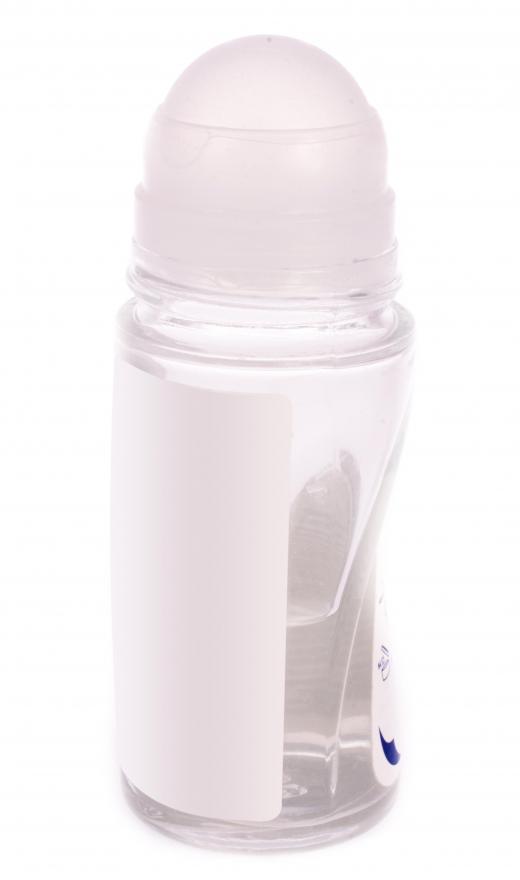What Is Ethylparaben?
Ethylparaben is a ethyl ester of hydroxybenzoic acid. Hydroxybenzoic acid compounds are more commonly known as parabens, which are used as preservatives in cosmetics, pharmaceuticals, and as a food additive to inhibit fungal growth. Parabens have also been found in breast cancer tumors. Though considered safe in the very low concentrations of 0.04% to 0.08% generally used in products, several studies suggest a link between parabens and breast cancer.
The Food and Drug administration (FDA) in the United States has found that parabens have the capability to mimic the female hormone estrogen in the human body. Evidence suggests, however, that this effect is negligible and does not increase natural estrogen levels. Despite such positive scientific findings as to the safety and tolerance of ethylparaben at the concentration levels currently used, it is one of many synthetic preservatives of which manufacturers are trying to reduce the use. Many cosmetics products are now being marketed as paraben-free in order to avoid any possible dangers the chemicals pose.

Several compounds related to ethylparaben are also used as fungicide-based preservatives. Methylparaben is a related chemical preservative that is often used to inhibit the growth of Drosophila larva, commonly known as fruit flies, in foods. Propylparaben is another paraben-related compound used as a fungicide, with the unique characteristic that is a naturally occurring chemical found in many plants and some species of insect. Butylparaben is often used in medicines as another derivative of the paraben family of compounds.
Controversy over the safety of products containing ethylparaben may continue for some time since studies of its adverse effects are small and limited in scope. A 2004 study published in the Journal of Applied Toxicology found that 60% of breast tumors were centered in a small area near the underarm, where deodorant is most often applied. Out of the 20 cases of malignant breast tumors studied, 18 had high concentrations of parabens in tumor cells.
Attempts to replace ethylparaben in the industries that rely upon it has resulted in the development of phenoxyethanol, which serves as both a preservative and ingredient in fragrances. Paradoxically, phenoxyethanol appears to have broader risks than ethylparaben and the other parabens it is designed to replace. Warnings have been issued about creams that contain phenoxyethanol for its potential toxicity to the immune system and non-reproductive organs. Restrictions on the use and labeling of products containing phenoxyethanol exist in Japan and the European Union. Studies in Canada for its tendency at bioaccumulation in the human body, however, have shown no risk.
AS FEATURED ON:
AS FEATURED ON:











Discussion Comments
Since ethylparaben is used as a preservative, do paraben-free cosmetics not last as long as others before they go bad? I would like to buy a paraben-free moisturizer, but it takes me over a year to use a whole jar, and I don't want to waste any.
Recently, my favorite brand of moisturizing cream introduced a paraben-free version. I would love to use it, since it is more natural and safe, but the price of this cream is pretty high. I can't justify buying it unless I know I can use the entire thing.
@cloudel – Tell me about it! I read the labels on my brand of syrup, my cooking oils, and my beverages, and they all had ethylparaben listed.
It seems that if we want to continue to take the easy way and live off of grocery store products, we will have to expose ourselves to potentially dangerous substances. Since few of us possess the skill and dedication needed to subsist off of a garden and farm, we rely on packaged products for our survival.
I'm with you on hoping that the FDA is right about the safety of ethylparaben. I really hope it is not causing the cancer epidemic in this nation.
Ethylparaben really is in a lot of stuff! After I heard about its potential link to cancer, I started reading labels, and I found that if I want to continue eating and living the way I do, I am going to have to expose myself to ethylparaben.
My favorite blackberry jam, the best brand of sandwich bread, my English muffins, and even my yogurt all contain ethylparaben. Without them, breakfast and parts of lunch would be lacking.
All of my perfumes and scented lotions contain it, as well. Since the levels used nowadays are considered to be safe, I'm just not ready to alter my lifestyle that dramatically.
The causes of cancer are so mysterious that I attempt to avoid everything ever associated with causing it in humans or in lab animals. It seems to me that the only way to avoid getting it is to use all-natural products and consume all-natural foods.
I only buy cosmetics that are paraben-free. Once I heard that deodorants contained ethylparaben, I found a recipe for a natural deodorant, and I made it at home.
I used equal parts coconut oil, baking soda, and cornstarch. I heated them up on the stove and stirred them until they blended. Then, I poured them into a used tube of deodorant that I had cleaned out.
I left it in the refrigerator all day. By the end of the day, it had solidified. It works great at neutralizing odors, and I don't have to worry about getting cancer from ethylparaben.
Post your comments